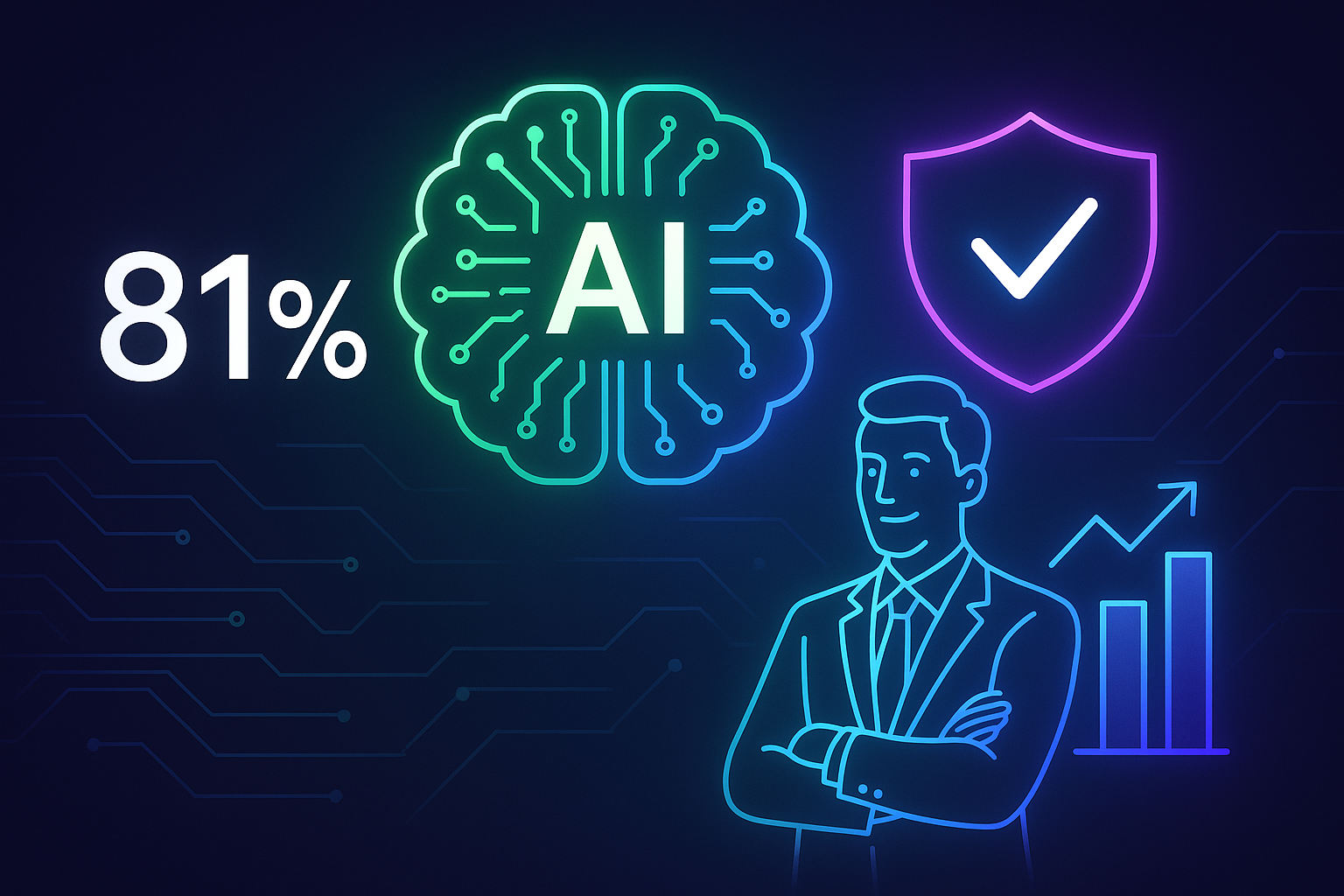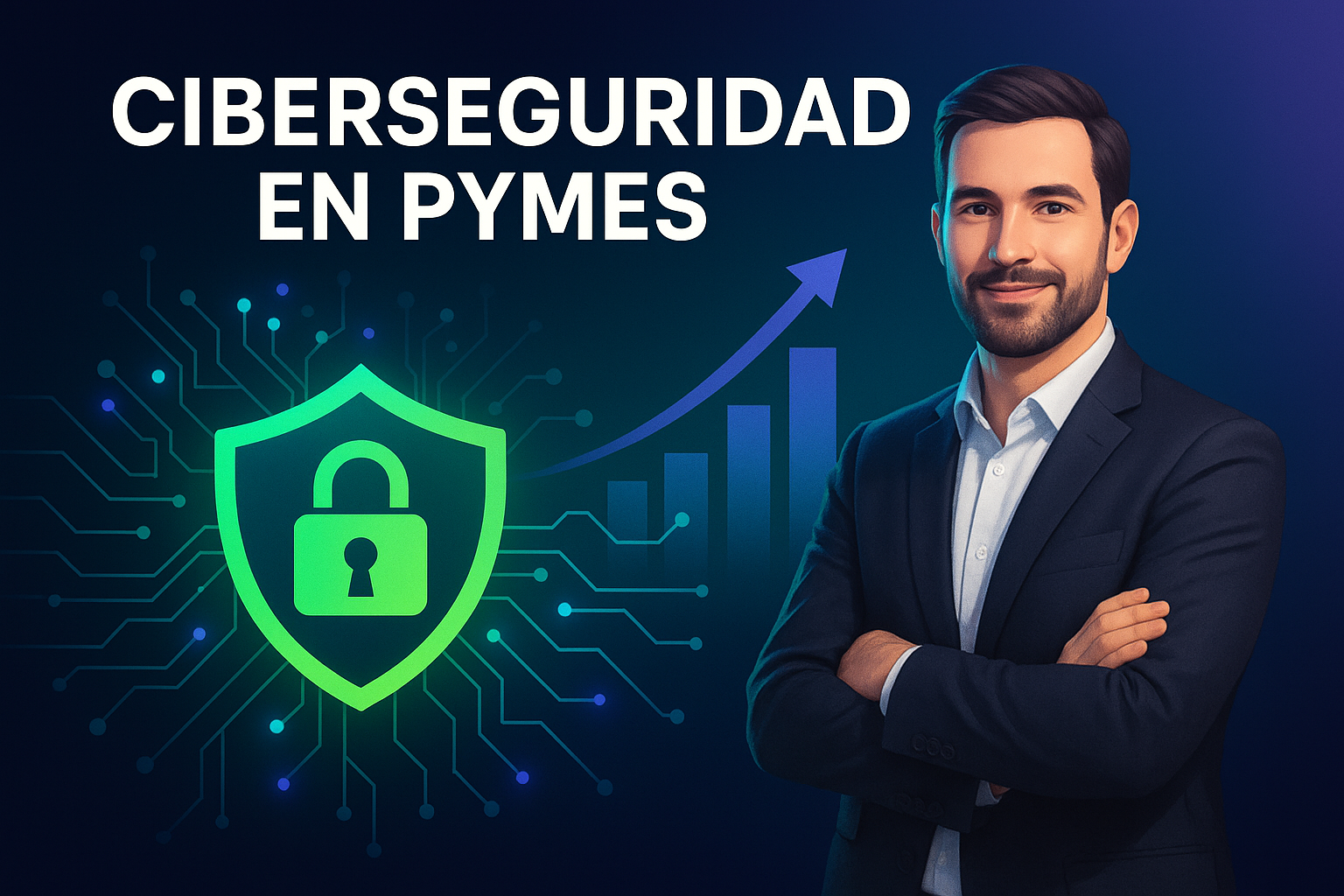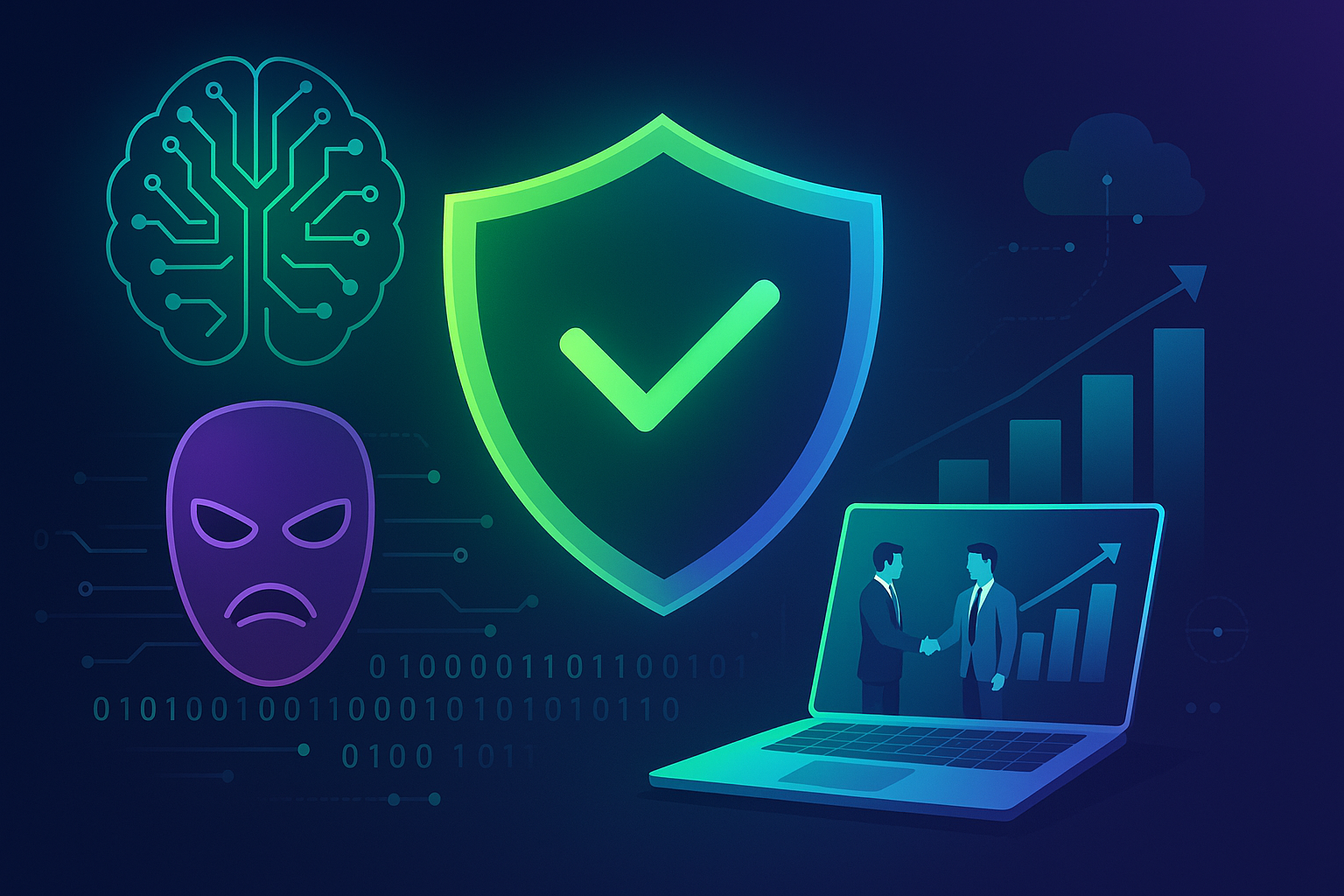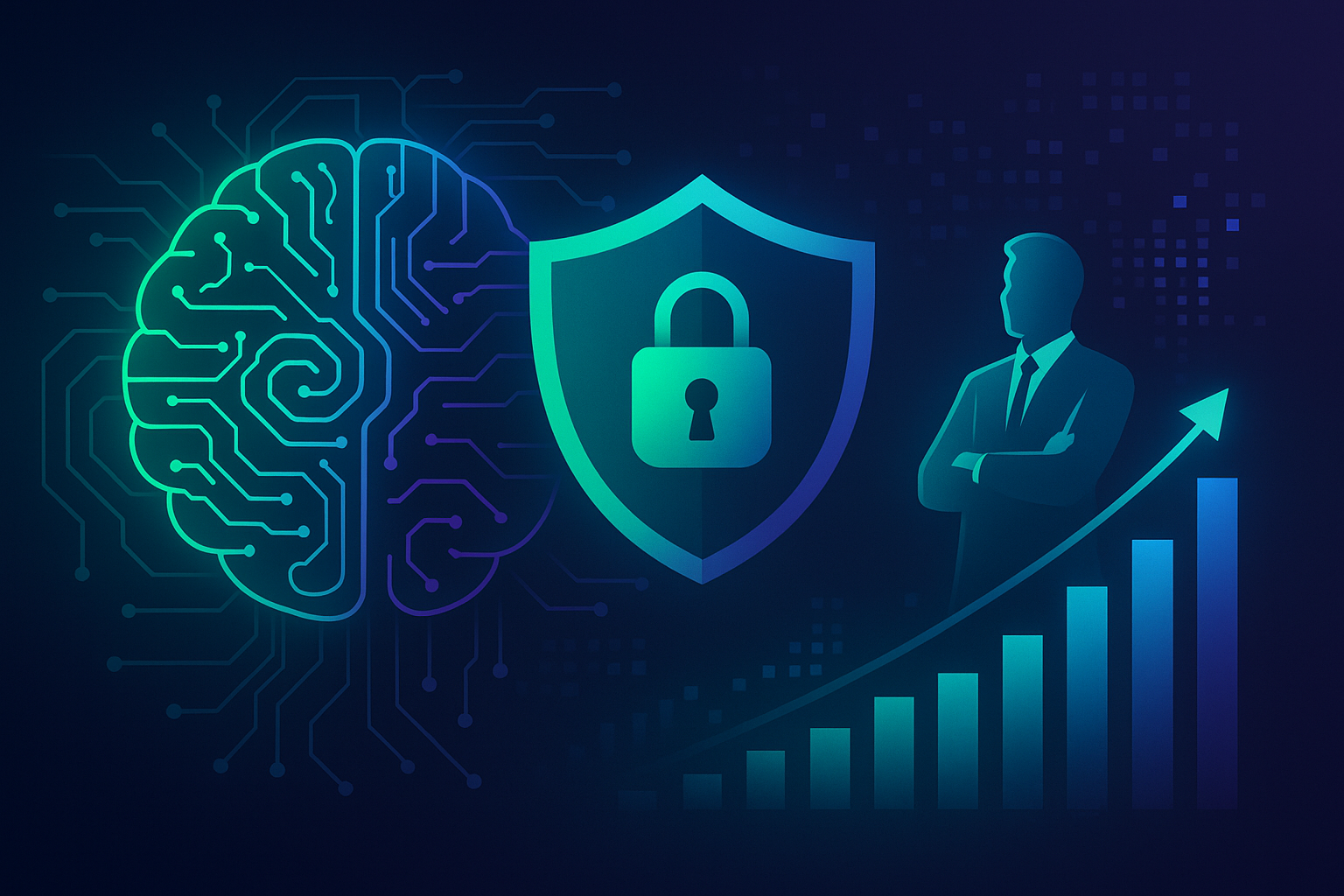Introduction: The Rise of AI in Cybersecurity
The adoption of AI in cybersecurity is no longer a futuristic concept — it’s a present-day necessity. According to a recent report published by Cybersecurity News, 81% of companies worldwide are already using artificial intelligence (AI) to bolster their cybersecurity efforts. This widespread use reflects not just a growing trend, but a fundamental shift in how organizations protect their digital assets in an increasingly complex threat landscape.
With the exponential increase in cyber threats, traditional security approaches are proving insufficient. Cybercriminals are leveraging automation, AI, and machine learning to orchestrate sophisticated attacks that bypass conventional defenses. In response, enterprises are integrating AI in cybersecurity to detect threats faster, automate incident response, and reduce human error.
In this comprehensive article, we’ll explore the key benefits, challenges, and best practices surrounding the use of AI in cybersecurity. We’ll also highlight how Hodeitek’s cybersecurity services — including EDR, XDR, and MDR, SOC as a Service, and Cyber Threat Intelligence (CTI) — align with this AI-driven security paradigm.
Why AI in Cybersecurity Is Becoming the Norm
Growing Threat Complexity and Volume
The digital threat landscape has evolved dramatically in recent years. Attackers are now using advanced persistent threats (APTs), polymorphic malware, and AI-driven bots to exploit vulnerabilities at scale. Traditional rule-based detection systems struggle to keep pace with these evolving tactics. That’s where AI in cybersecurity comes in — it enables organizations to identify patterns, detect anomalies, and respond to threats in real time.
AI-powered threat detection systems can analyze millions of data points across networks, endpoints, and user behaviors, significantly improving detection accuracy and speed. This proactive approach helps organizations mitigate risks before they escalate into full-blown incidents.
Furthermore, AI technologies such as machine learning and natural language processing (NLP) can be trained to recognize emerging threats by continuously analyzing threat intelligence feeds, logs, and behavioral data.
Shortage of Skilled Cybersecurity Professionals
One of the most pressing challenges in cybersecurity today is the global shortage of qualified professionals. According to (ISC)², the cybersecurity workforce gap reached 3.4 million professionals globally in 2023. AI in cybersecurity helps bridge this gap by automating routine tasks such as log analysis, threat detection, and incident response.
AI systems can function as virtual analysts, handling massive volumes of data and surfacing relevant security alerts to human operators. This not only boosts efficiency but also allows security teams to focus on more strategic, high-value activities.
At Hodeitek, we understand the importance of balancing automation with human expertise. Our SOC as a Service (SOCaaS) delivers 24/7 monitoring and response powered by both AI and skilled analysts.
Business Demand for Real-Time Response
In today’s hyperconnected world, businesses demand real-time visibility and response capabilities. Downtime due to cyberattacks can result in massive financial and reputational damage. AI in cybersecurity enables real-time decision-making by continuously analyzing network traffic, user behavior, and threat intelligence.
For example, AI-based Endpoint Detection and Response (EDR) solutions can immediately isolate compromised endpoints, contain threats, and initiate remediation processes autonomously. This level of speed and precision is critical in mitigating the impact of attacks like ransomware or insider threats.
Hodeitek’s EDR, XDR, and MDR services incorporate AI to deliver intelligent, real-time threat detection and response across endpoints, networks, and cloud environments.
Key Benefits of AI in Cybersecurity
Enhanced Threat Detection and Prediction
AI algorithms can detect known and unknown threats by learning from historical data and identifying unusual behavior patterns. Unlike signature-based detection systems, AI models can identify zero-day attacks and advanced persistent threats (APTs) before they cause damage.
By analyzing user behavior analytics (UBA), AI can detect insider threats or compromised accounts with greater accuracy. This predictive capability allows organizations to proactively strengthen their defenses.
For organizations that need continuous monitoring and advanced analytics, Hodeitek’s Cyber Threat Intelligence (CTI) service leverages AI to provide contextual and actionable insights.
Automation of Incident Response
Manual incident response is time-consuming and error-prone. With AI in cybersecurity, many of these processes can be automated. AI-powered Security Orchestration, Automation, and Response (SOAR) platforms can triage alerts, assign severity levels, and trigger predefined playbooks.
This automation significantly reduces mean time to detect (MTTD) and mean time to respond (MTTR), improving overall security posture. It also frees up human analysts to focus on critical decision-making and complex investigations.
Hodeitek’s SOCaaS includes automated incident response mechanisms powered by AI, ensuring threats are addressed promptly and effectively.
Reduction in False Positives
One of the biggest pain points in cybersecurity is the overwhelming number of false positives generated by traditional systems. AI reduces alert fatigue by correlating data from multiple sources, applying contextual analysis, and prioritizing alerts based on risk.
Machine learning models continuously improve over time, learning which alerts are actionable and which are not. This enhances the efficiency of security operations centers (SOCs) and minimizes wasted resources.
To further reduce false positives, Hodeitek integrates AI into its Industrial SOCaaS offering, providing tailored threat detection for OT environments with minimal noise.
Challenges of Implementing AI in Cybersecurity
Data Quality and Availability
AI systems require vast amounts of high-quality data for training and decision-making. Incomplete, inaccurate, or biased data can lead to flawed models and unreliable outcomes. Ensuring data integrity is a critical prerequisite for successful AI implementation.
Organizations must establish robust data collection, labeling, and governance mechanisms. Using synthetic data or anonymized datasets can help overcome privacy and compliance concerns.
Hodeitek supports clients in building secure and compliant data pipelines that feed their AI-driven cybersecurity tools.
Adversarial Attacks on AI Models
Just as AI can enhance cybersecurity, it can also be exploited by attackers. Adversarial machine learning involves manipulating input data to deceive AI models. This can result in evasion of detection or false negatives.
To mitigate this risk, organizations must employ techniques such as adversarial training, model validation, and explainable AI (XAI). These strategies increase model robustness and transparency.
Hodeitek incorporates these best practices into its AI development and deployment lifecycle, ensuring resilient cybersecurity models.
Lack of Skilled Personnel to Manage AI Systems
While AI reduces the need for manual intervention, it still requires skilled professionals to manage, tune, and interpret AI models. The shortage of AI-literate cybersecurity experts can hinder successful adoption.
Organizations should invest in upskilling their workforce and partnering with expert providers. Managed services like VMaaS and MDR can help bridge this gap.
Hodeitek provides end-to-end support — from AI model configuration to threat hunting — empowering clients to maximize the value of AI in cybersecurity.
Best Practices for Adopting AI in Cybersecurity
Define Clear Objectives and Use Cases
Before adopting AI, organizations should identify specific problems they aim to solve — such as reducing phishing attacks or improving incident response. Aligning AI initiatives with business goals ensures relevance and ROI.
Start with pilot projects that deliver quick wins, such as automating alert triage or integrating AI into email security. Expand gradually as expertise and confidence grow.
Hodeitek works closely with clients to define, design, and deploy AI use cases tailored to their risk profile and operational maturity.
Ensure Ethical and Transparent AI Use
Ethical considerations are critical when deploying AI. Organizations must ensure their AI systems are fair, explainable, and compliant with regulations like GDPR and ISO/IEC 27001.
Transparency is essential, especially in security contexts where AI decisions can impact critical infrastructure. Using explainable AI tools helps stakeholders understand how decisions are made.
Hodeitek emphasizes responsible AI by integrating ethical principles into its development processes and offering guidance on AI governance frameworks.
Integrate AI with Existing Security Infrastructure
AI should not operate in isolation. It must be integrated with existing security tools such as SIEM, firewalls, and endpoint protection platforms. This ensures consistent visibility and coordinated response.
Modern platforms support API-based integration and interoperability with popular cybersecurity solutions, enabling seamless data flow and orchestration.
Hodeitek ensures that AI solutions are fully integrated with your current ecosystem, enhancing both efficiency and security outcomes.
Future of AI in Cybersecurity
AI-Driven Autonomous Security Systems
The future of cybersecurity lies in autonomous systems capable of detecting, analyzing, and responding to threats without human intervention. These self-healing security architectures will continuously adapt to new attack vectors.
AI will also enable predictive threat modeling, allowing organizations to anticipate attacks before they occur. This proactive approach will redefine cyber defense strategies.
Hodeitek is actively investing in autonomous security capabilities to help clients stay ahead of emerging threats.
Integration with Quantum and Edge Technologies
As quantum computing and edge devices become mainstream, cybersecurity must evolve accordingly. AI will play a pivotal role in securing quantum communications and distributed edge environments.
For example, AI can optimize encryption protocols in quantum networks or detect anomalies in edge devices with limited compute resources.
Hodeitek’s R&D team is exploring next-gen AI solutions designed to secure future digital infrastructures.
Collaboration Between AI Systems
In the future, we will see collaborative AI systems working across organizations, sharing threat intelligence in real-time. Federated learning and AI-driven threat sharing will create a collective defense ecosystem.
This approach enhances global cybersecurity resilience and accelerates the detection of novel threats. Open-source platforms and industry alliances will play a crucial role in enabling this collaboration.
Hodeitek supports collaboration through its CTI services, which aggregate and share threat data across sectors.
Conclusion: Embrace AI in Cybersecurity to Stay Ahead
The widespread adoption of AI in cybersecurity is a testament to its transformative power. From threat detection and incident response to predictive analytics and automation, AI is reshaping how we defend our digital environments.
However, successful implementation requires a balanced approach — combining cutting-edge technology with skilled professionals, ethical practices, and robust data governance. Organizations that embrace this paradigm will be better positioned to navigate the complex threat landscape of tomorrow.
At Hodeitek, we help businesses harness the full potential of AI in cybersecurity through tailored solutions and expert guidance. Explore our services to learn how we can support your security journey.
Ready to Elevate Your Cybersecurity with AI? Let’s Talk
Don’t wait for the next breach. Discover how Hodeitek’s AI-driven cybersecurity services can protect your business 24/7. From automated threat detection to managed response and strategic consulting, we’re here to help.
Secure your digital future — with Hodeitek.
External Sources:






